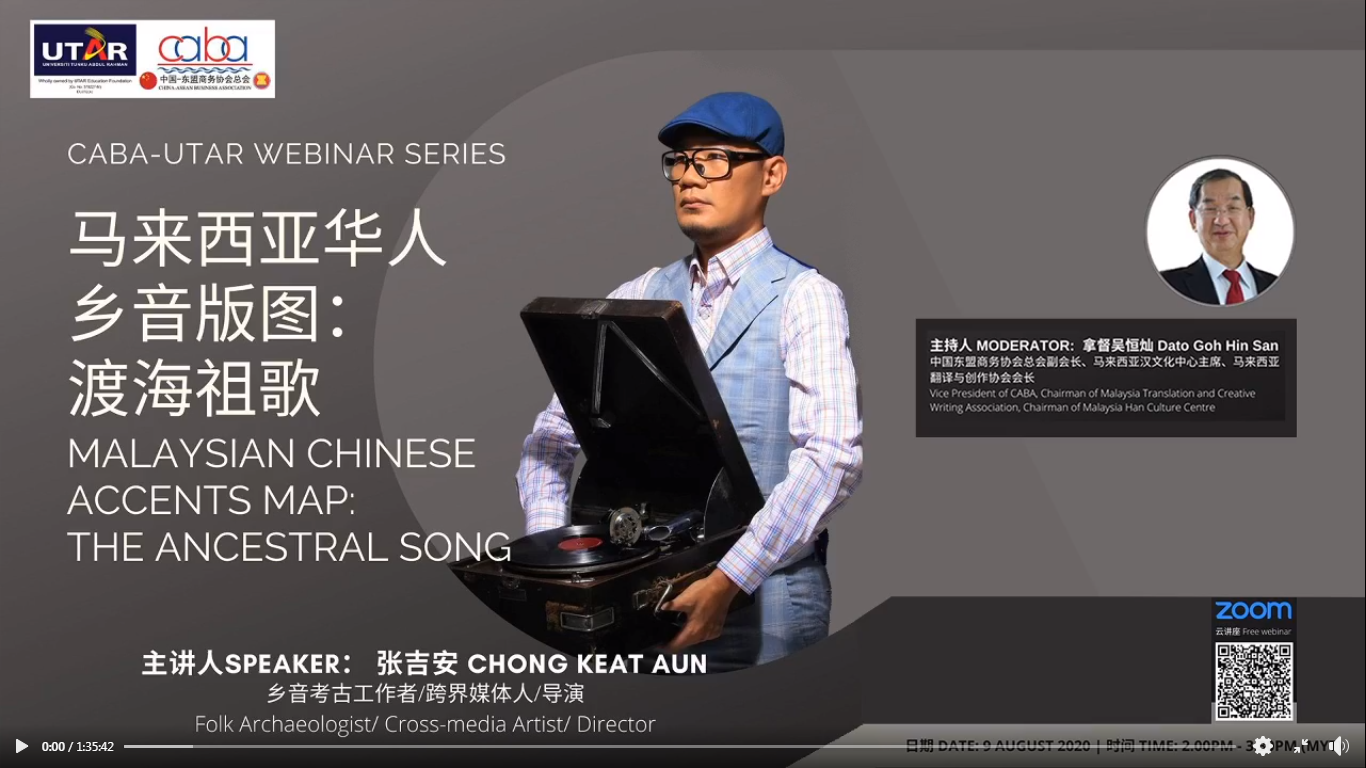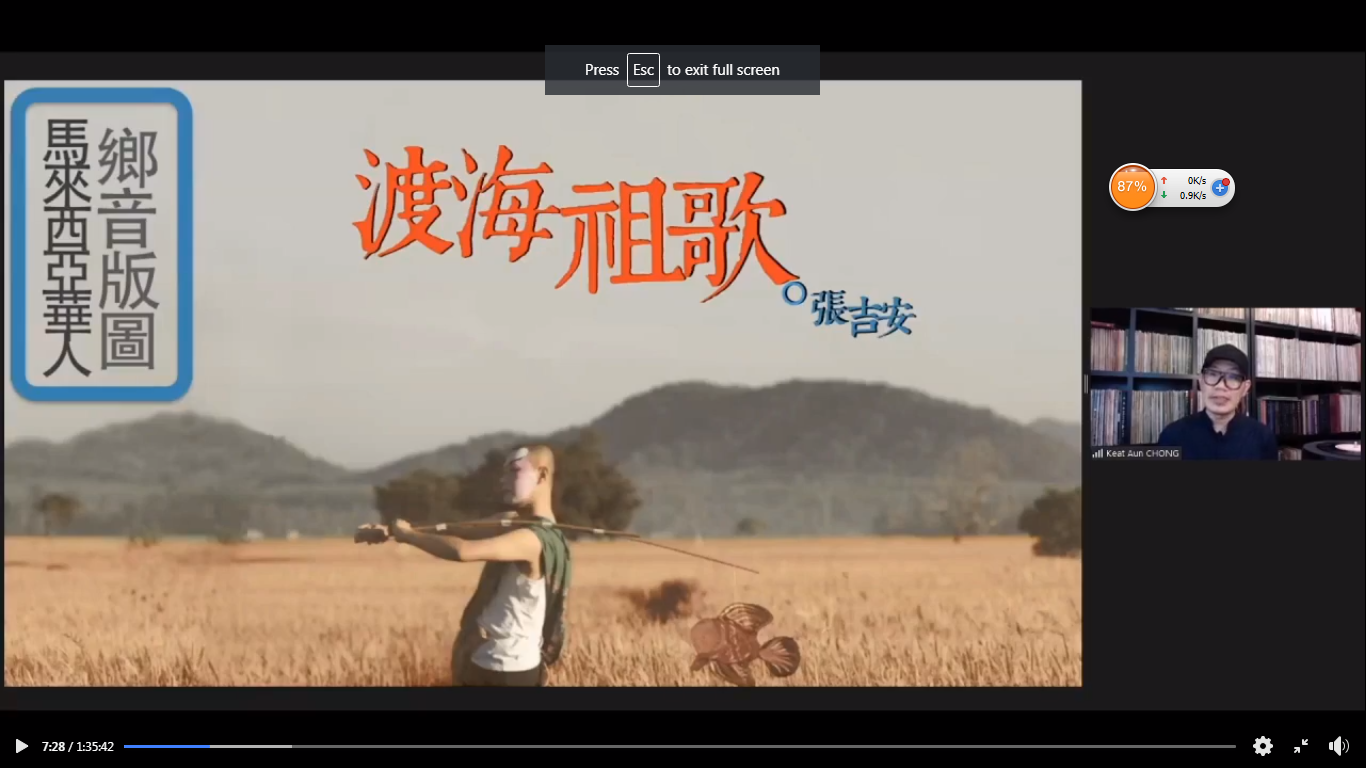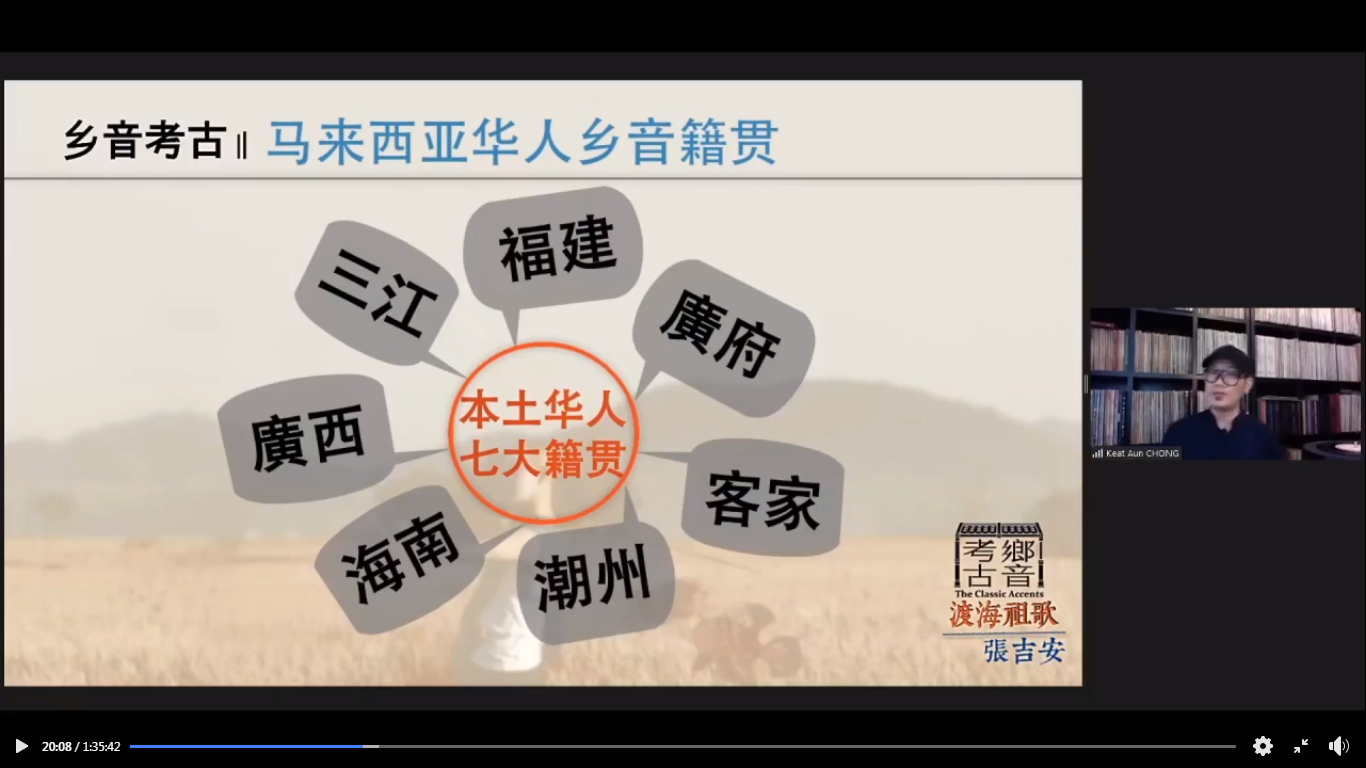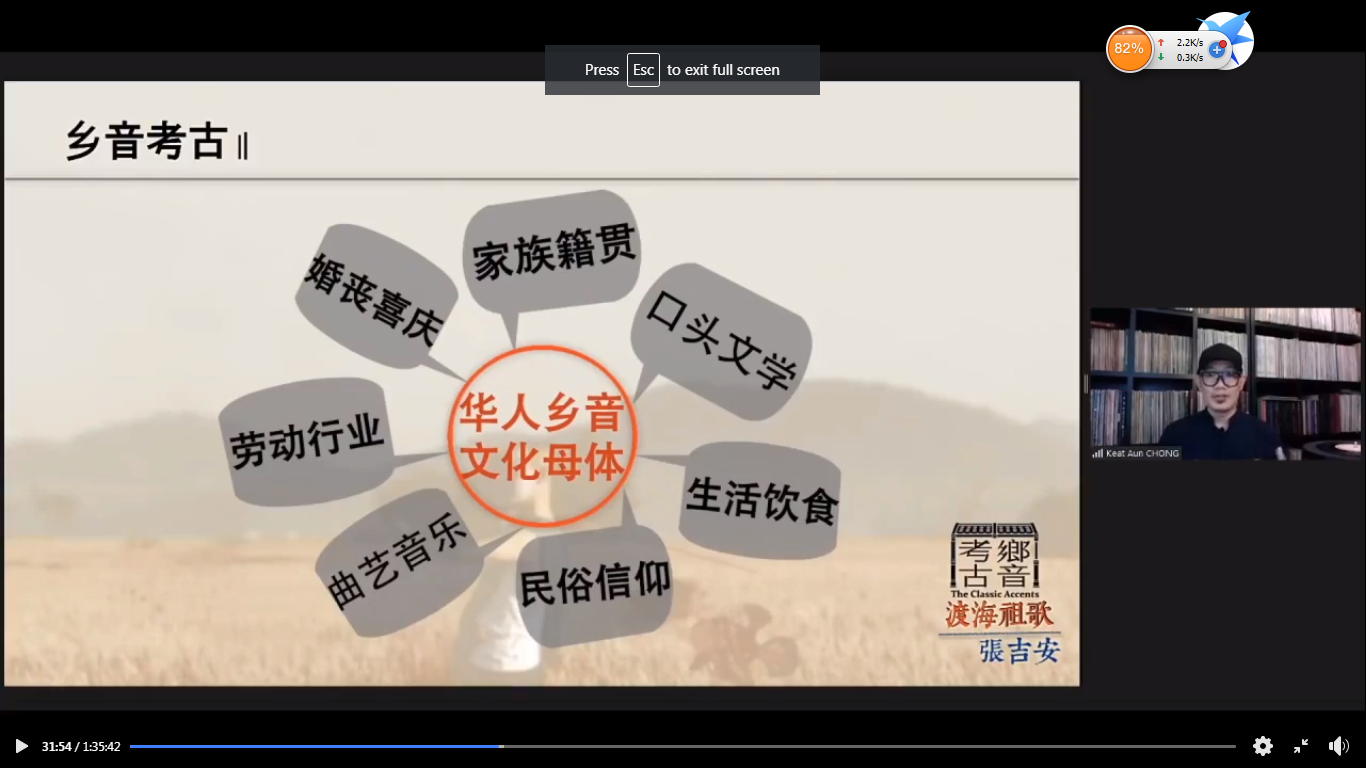
With the aim
to discuss the native accent of the local Chinese society,
UTAR and China-ASEAN Business
Association (CABA) co-organised a webinar titled “Malaysian Chinese Accents
Map: The Ancestral Song” on 9 August 2020 via ZOOM meeting. The webinar was
conducted in Mandarin and English.
Speaking at
the webinar was Folk Archaeologist, Cross-Media Artist and Film Director
Chong Keat Aun. It was moderated by CABA Vice President-cum-Chairman of
Malaysia Han Culture Centre Dato’ Goh Hin San, who is also the chairman of
Malaysia Translation and Creative Writing Association. This webinar saw 100
participants in attendance.
Chong, who has
hosted programmes concerning accents in Malaysia, began the webinar by
explaining the plans of Folk Archaeology since 2005 that focused on the
native languages of Chinese in Malaysia. The main objective of Folk
Archaeology, according to Chong, is to build a local Chinese audio-visual,
text, and physical database for the local accents of Chinese in Malaysia for
the past 15 years including oral literature, songs, private envoys,
references, community oral records, records of expectations carried out by
older generation and Chinese Quyi music.
Chong also
spoke about the cognition of local accent which included the ancestral home,
native status and ethnic feelings of the Malaysian Chinese. “Our native
identity has been slowly changing with the change of time,” said Chong. He
also pointed out the seven major local accents of Malaysian Chinese, namely
Sanjiang, Hokkien, Cantonese, Hakka, Teochew, Hainanese and Guangxi. He
said, “The language has travelled across the ocean with its identity.”
Chong said the
matrix of Chinese native accent also included aspects of life which is
family origin, spoken text, living diet, folk beliefs, Quyi music, labour
industry, weddings and funerals. He also said that a diversified hometown
promotes multiculturalism and must be recorded as a reference for future
generations.” One of the industries that can best highlight the relationship
of the nationality is the food catering
industry,” said Chong. Finally, he
encouraged the participants to promote the Chinese cultural heritage as part
of Malaysia’s tourism industry while reminding them that it requires
corporate investment to do so.
The webinar
ended with a brief Q&A session.




Wholly owned by UTAR Education Foundation Co. No. 578227-M LEGAL STATEMENT TERM OF USAGE PRIVACY NOTICE